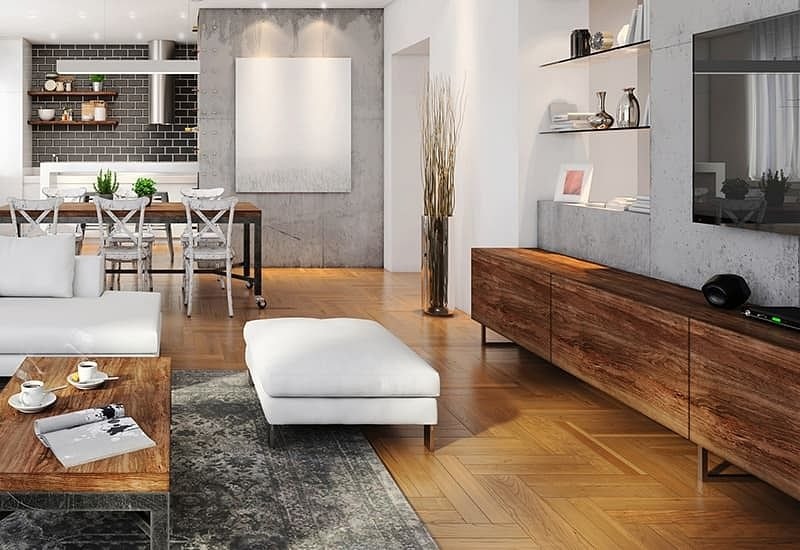Style Profile: Mid-Century Modern
Posted
on April 26, 2018

Elements of mid-century modern architecture
Mid-century modern is a broad design style that covers architecture, interior design, graphic design and urban development. It gets its name from the 1950s, when the term was coined and design was becoming simpler. Design trends typically have no hard-and-fast dates, but you can find mid-century modern homes built as early as 1935 and as late as 1975. Homes in this era had five common characteristics:
- Ranch or split-level design – Mid-century modern homes were influenced by the Prairie style popularized by Frank Lloyd Wright. They were low and flat — built close to the ground with a low-pitched hip or gable roof.
- Clean, sleek lines – Like other modern styles, mid-century modern favored simplicity and function over ornate architecture and detail.
- Emphasis on lifestyle – Mid-century modern style met the needs of World War II veterans returning home to start families. Vets wanted open living spaces inside and out, which meant open concept floor plans and patios to enjoy the outdoors.
- Floor-to-ceiling windows – Large walls of glass helped build the connection to the outdoors. Linear window styles were used to fit the clean, modern look.
- Recessed entrance – The front door was set back and tucked under the main roof to provide a practical, protected entryway. Wood was the material of choice because it was welcoming and comforting.
Interior design of mid-century modern homes
The defining features of mid-century modern architecture carried over to the inside of the home. With the family at the forefront, homes were primarily designed for comfort and function. They were also simple and minimalistic — reflecting the huge demand for affordable houses during the baby boom. These characteristics resulted in an eclectic mix of materials, colors and decor that were heavily influenced by the rapid modernization shaping the country.
Locally-sourced and affordable materials
Mid-century modern homes are known for their wood interiors. Wood is a natural, comforting material. Designers used different types of wood, contrasting stains and unfinished styles on doors, ceilings, floors, furniture and storage units.
Plastics started appearing in the mid-century modern era and became an affordable option that provided sleek style. Other non-traditional materials like metal and glass also provided the modern look and offset the soft feel of wood.
Linear window styles
Windows with horizontal sashes helped provide the clean lines throughout the home and highlighted the close-to-the-ground architecture. Casement windows and double-hung windows were popular choices. Picture windows were a defining feature of the home design — especially on the walls with floor-to-ceiling windows — because they maximized the view to the outdoors. Hopper and awning windows were used in combination with picture windows to provide ventilation.
All kinds of color
A lot of colors went in and out of fashion in the 40-plus years of the mid-century modern era. Some homes used bright, bold color palettes; others relied on neutral hues for a more sophisticated look. No matter the color, the home’s palette was used to contrast the natural and industrial materials found throughout the home. Or to let the vibrant colors of the furniture and decor pop.
Functional, comfortable furniture and decor
Ranch and split-level home designs and open concept floor plans created large living spaces. Like the mid-century modern movement itself, homeowners focused on function and comfort to fill their spaces. Rooms were uncluttered and relaxing. Everything served a purpose.
Furniture was kept to a minimum. The few choice pieces were slim, curved, straight or smooth — opposite of the bulky, heavy wooden furniture of the past. Wood was still common, but newer and cheaper materials like plastic, plywood, vinyl and molded fiberglass quickly gained popularity.
The new materials expanded the color palette of furniture and decor. Interesting shapes and colors made each piece stand out in a minimal space. Different textures and geometric patterns provided additional contrast to the wood and non-traditional materials used in the home design.
Many homeowners like to decorate with their home’s style in mind. But you don’t need a home with mid-century modern architecture to get the look. Follow the defining features of the style — function, simplicity, comfort, minimalism and contrast — to put your own twist on a timeless trend.
Schedule a free consultation to find windows and doors for your home.
